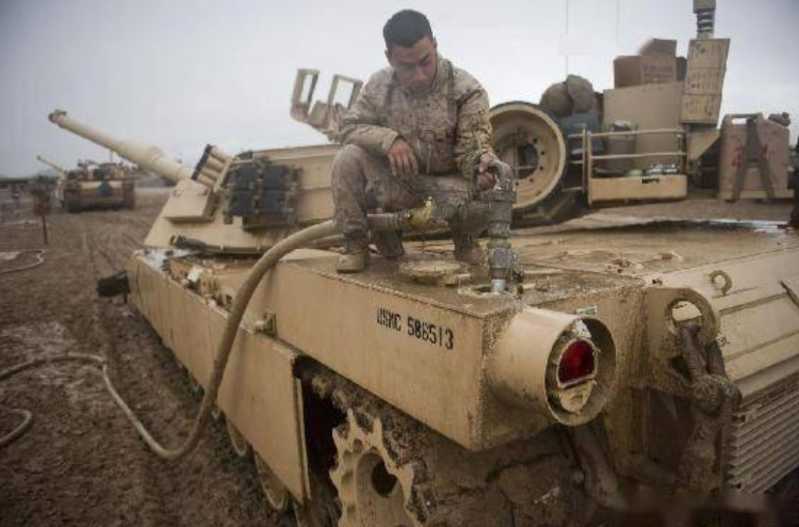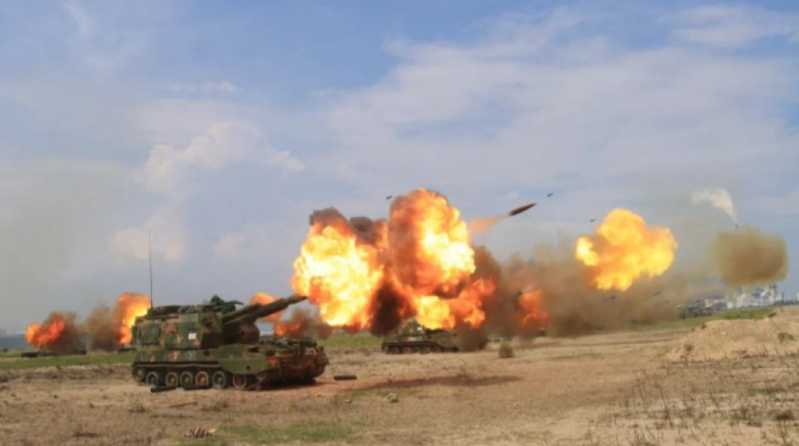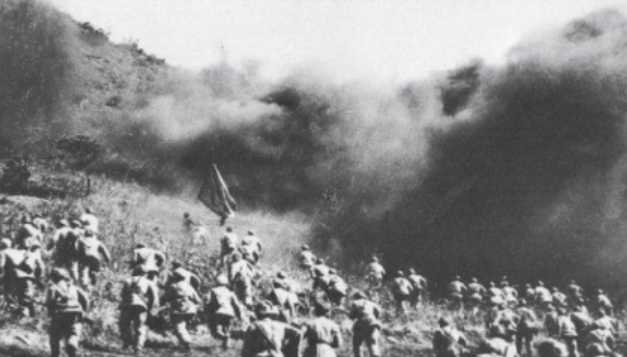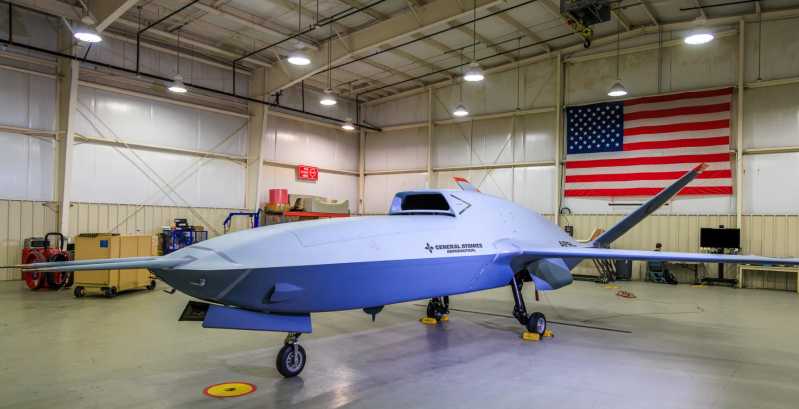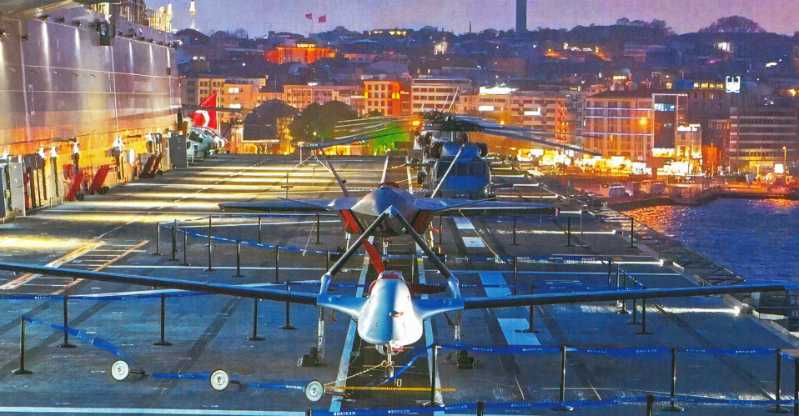Since mid-June 2023, the Western-aided Leopard 2A4/A6 main battle tanks and M2A2 ODS-SA Bradley infantry fighting vehicles have appeared on the battlefield one after another along with the Ukrainian army’s counterattack. At the same time, they have also been strongly blocked by the Russian army. A large number of Ukrainian tanks were destroyed at the front of the position, and photos of burning armored wreckage have made headlines in major news media around the world. Among the weapons used to attack Western tanks and armored vehicles, there are not only Ka-52 "Short Lip Crocodile" armed helicopters, "Kornet" anti-tank missiles, "Red Soil" 152mm precision-guided artillery shells, "Lancet"-3 cruise missiles, and various types of anti-tank mines, but also FPV racing rotor drones modified by Russian soldiers themselves. These small drones are equipped with mines, RPG rockets and other explosives. With good low-altitude and high-speed performance, they continuously impact and harass various ground targets and cooperate with other firepower to destroy targets. FPV drones are just a microcosm of low-cost civilian drones fighting on the battlefield in Ukraine. These civilian drones that can be easily obtained on the online shopping market have gradually become the new "death god" on the battlefield!
A Ukrainian Army UAV Team Field Records
During the war, drones were used on a large scale by the armed forces of Russia and Ukraine. From small-scale quadcopter drones, to small and medium-sized fixed-wing drones, to various cruise missiles (suicide drones with cruise functions), and large medium-altitude long-flight reconnaissance and strike drones, they all played an important role in this war. In addition to various military standard drones, many civilian low-cost drones have also entered the hands of the warring parties in Ukraine through the Internet’s convenient online shopping platforms and smooth logistics channels. The most widely used of them are naturally various types of civilian/commercial ultra-light multi-rotor drones.
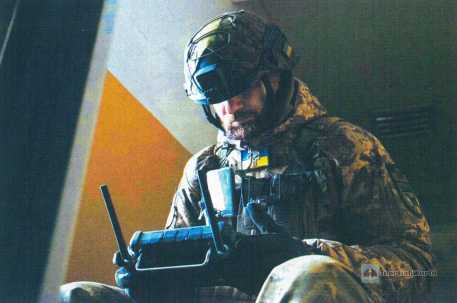
Operator "Rem"
In April 2023, Francis Farrell, a reporter from the Kiev Independent, went deep into the Bakhmut front, where the battle was still fierce, and closely followed and interviewed a Ukrainian drone team for 3 hours. This team belongs to the Ukrainian Defense Forces "Skala" drone battalion, operating civilian/commercial ultra-light multi-rotor drones obtained through various online shopping channels to perform battlefield surveillance and strike missions. Through the photos and battlefield notes taken by reporters, we can see the combat style of Ukrainian civilian drone operators fighting in this "hell city" (in order to protect these operators, the "Kiev Independent" used pseudonyms when publishing reports):
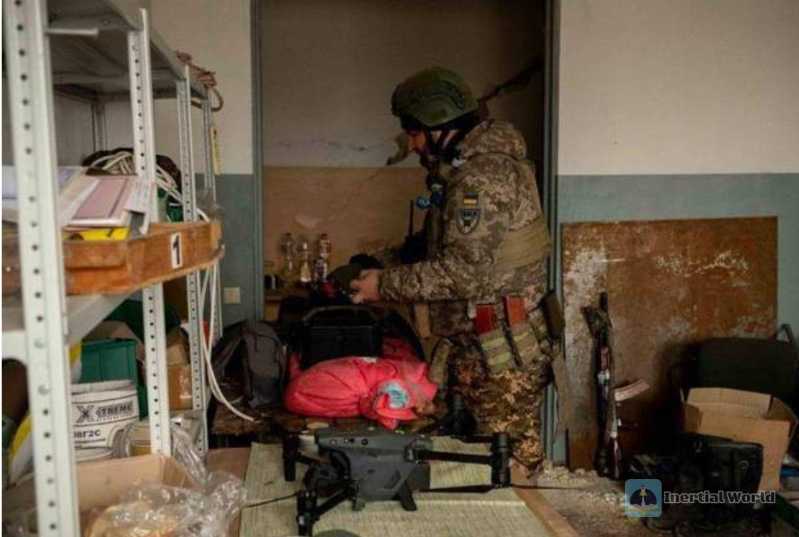
"Bakhmut, Donetsk Oblast-On a large handheld remote control screen, a Ukrainian drone operator ’Rem’ is checking a gray, destroyed residential area and nearby muddy trenches. It didn’t take long to find movement. A small-scale Russian commando was pushing into a Ukrainian trench. In front of the last row of houses on the edge of the city.
’Look, he’s shooting now.’ The drone operator ’Rem’ pointed to a gray figure holding a rifle and said, ’There’s another one, right over there, he threw a grenade. The Russian army and the Ukrainian soldiers in the trenches are now less than 30 meters apart. The drone operator told reporters: ’Our civilian drones don’t have any weapons to shoot them, but in this case, even if there are weapons, it’s too dangerous, we might hit our own people.
Soon after the Russian soldiers appeared, they hid in the complex terrain and dense vegetation, from people’s sight The drone disappeared from the line, and Rem recorded the location and then began to look for other targets. Rem, who was holding the remote control, was a car dealer in Dnipro, Ukraine’s fourth largest city. He is now affiliated with the Skala Battalion, a battalion in the Ukrainian Army responsible for aerial reconnaissance and assault operations. It has been on the Bakhmut front since late autumn last year. Rem, as a drone operator, sat in the corridor of the 11
-In the corridor of an industrial building, a high-end commercial ultra-light four-axis four-rotor drone was being operated. This civilian drone was highly praised by the Ukrainian army for its excellent lens zoom capability.
Not far from where the previous battle took place, ’Rem’ found something again. ’This is a position with an automatic grenade launcher deployed, providing fire support for the Russian army. He then shouted the coordinates of the Russian firepower point to the Ukrainian artillery unit on the radio. He explained to reporters that he called the 2S7 ’Peony’ self-propelled howitzer capable of firing 203mm shells, which is a Soviet-era heavy artillery that is used by both Russia and Ukraine and is also the largest caliber self-propelled artillery in the war. "For a firepower point of this size, the firepower of the 2S7 is enough. We will use everything we have to hit them, he said.
Civilian drones from both Russia and Ukraine have played a huge role on the battlefield, most of which were temporarily modified in the camp. As the Russian army continued to attack Bakhmut and its suburbs, it became the site of the most intense conflict on the entire front, and drone teams like ’Rem’ were not short of work. Bakhmut is located at the intersection of several main roads in the northern defense belt of Donetsk Oblast. It was the site of a series of major battles by the Russian army last fall. After that, Bakhmut’s political symbolic significance became even greater. ’Rem’ looked at the monitoring screen of the drone remote control. The fire support of the Ukrainian artillery did not come, but the close-range fire support of the Russian army’s long-range artillery and grenade launchers first covered the trenches of the Ukrainian defenders. The Russian assault team also slowly and firmly advanced to the target area, eventually occupied the Ukrainian trenches, and began to establish positions to fully defend against the Ukrainian counterattack.
’Rem’ pointed to a tactical map and said: "The sad thing is that the Russian commandos are already in this forest. From there they have a direct line of sight, and even tanks can hit us directly. At this time, the Ukrainian artillery came to say that they were ready, but to ’Rem’s dismay, the 2S7 self-propelled howitzer was aimed at another target-a warehouse about 1 kilometer away, where Russian soldiers were found earlier. ’Rem’ repeated his request to attack the Russian commandos, but the artillery said that they had been asked to attack the warehouse and were unable to attack the Russian commandos. ‘Rem’ sighed and declared ‘all clear’.
‘Fire!’ came the shout over the radio, and ‘Rem’ immediately called out to the reporter, ‘Let’s see’. The loud roar of the 203mm howitzer came from a distance, easily distinguishable from the other battle guns. As the shells flew through the air, there was a tense silence in the corridor. The screen on the drone remote control showed that the first shell landed about 20 meters from the target, and the second shell also flew away, and a cloud of smoke rose behind the building. Ideally, after the artillery is ready, the time from the drone operator discovering the target to the Ukrainian artillery engaging it may be only 5 minutes.
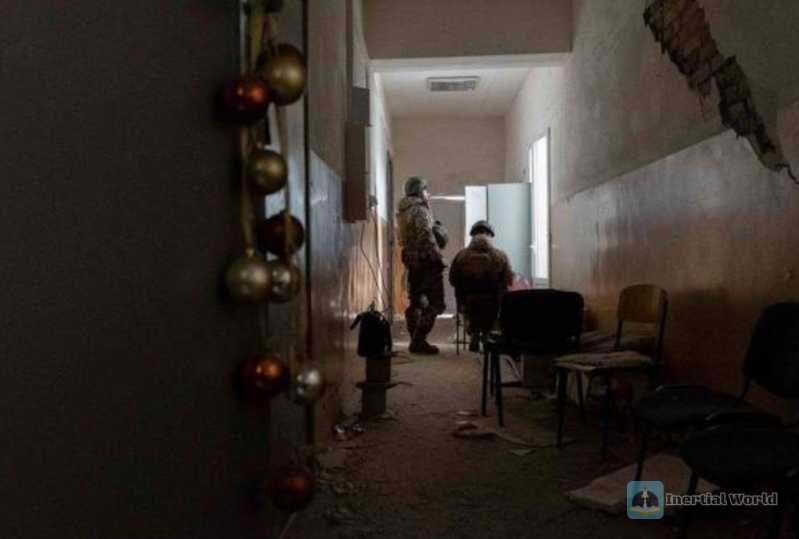
Commander ‘Duke’ broke the silence and said: ‘We sometimes see Russian soldiers complain that Ukrainians can call in artillery fire easily and quickly. ’ For ordinary soldiers, it is much more difficult to do this throughout the Russian command system. ’ Duke then managed to coordinate another artillery squad to attack the Russian commando grenade launcher position that Rem had previously identified. This time, the Ukrainian artillery used the Polish-made Crab self-propelled howitzer, firing 155mm NATO-standard shells. This 155mm artillery is highly praised in the Ukrainian army and its accuracy is better than that of Soviet-era weapons. But this time, the Polish howitzer also had problems, and the shell hit the target more than 100 meters behind.
’Not bad, not bad. ’Rem, the drone operator, said sarcastically to the gunner of the Crab howitzer over the radio, ’but it’s still far from where we want to hit. The artillery then told Rem on the radio that they were going to fire the last shell, and soon the drone saw an explosion in the target area, and it was obvious that the shell hit the Russian automatic grenade launcher. In fact, as winter continues, ammunition shortages, especially for 152mm, 155mm and 122mm howitzers, plague both Russia and Ukraine. A video shot near Bakhmut in late December 2022 appeared on social media, in which soldiers from the Russian "Wagner" mercenary group said they had run out of artillery ammunition in the area. Ukrainian soldiers from different units around Bakhmut also pointed out in an interview with the Kyiv Independent that the intensity of Russian artillery has decreased in recent days, but they warned not to draw optimistic conclusions. At the same time, the Ukrainian army’s ammunition problems are also well known. Soviet-era artillery shells are in short supply in Europe, and few facilities are able to produce them. It was not until December 2022 that Ukraine announced the start of domestic manufacturing of these shells.
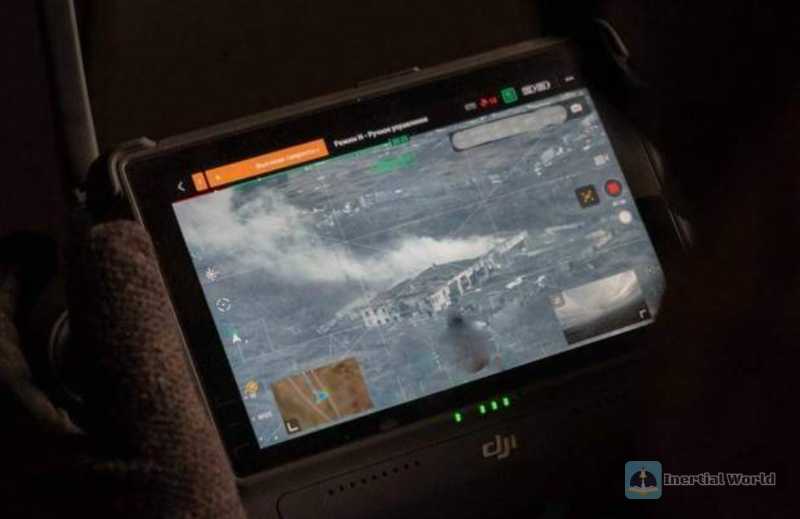
"Rem" observes the situation on the battlefield through the display screen of the drone remote control
Back to the drone. Since the summer of 2022, both sides have been modifying civilian quadcopters to complete a particularly terrible task - dropping improvised bombs on enemy trenches.
The drone operator "Contrabas" on the other side of the corridor is a young man who specializes in this new form of warfare. He was sent to Izyum in Kharkiv for training in May 2022. The bombs slowly fell on the unsuspecting enemy infantry, and the horror scenes of explosions and blood and flesh flying filled the small control screen, which brought a great shock to the spirit of the young soldiers. Long-term combat may even bring a devastating blow to the seven qi of their own side because this behavior is too cruel. Usually, the wounded are abandoned in fear by those who can still move, and they twist in pain in the mud before another bomb arrives.
’In an area of Kharkiv. Operator ’Contrabas’ told reporters, ’We dropped a large number of bombs, which had a strong deterrent effect on their infantry and tanks. In Bakhmut, the front is more stable, troops are more concentrated, and civilian drones have less of an effect dropping bombs. "The role these drones can play depends largely on the battlefield environment, and when you drop a bomb on them, your drone has a more than 50% chance of being lost, and they can be easily shot down by light weapons," said Contrabas. "Currently we are using civilian drones in large numbers, but not everyone understands that drones are a resource that is consumed very quickly here. A drone can work for a month or two, or it can be shot down on its first flight." Ukraine’s leadership understands the continued need for drones on the front line, and a drone program was launched by the national fundraising platform United24 and promoted by international celebrities such as "Star Wars" actor Mark Hamill. "The average price of these things is around $2,000, so it’s always a pity if they are lost on the first flight," Contrabas said.
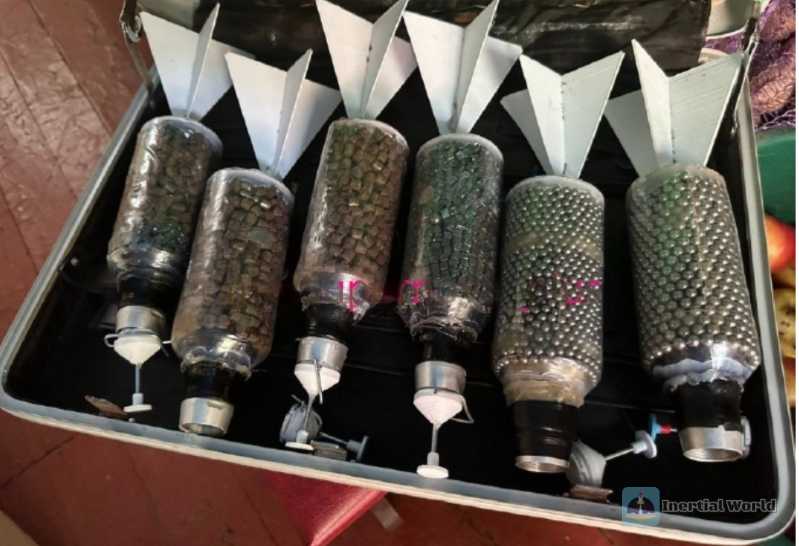
On the other side of the corridor, Rem received another call from the commander of a nearby infantry battalion. His four soldiers had lost contact with the battalion headquarters. They were in a trench on the eastern outskirts of the city. The commander’s voice was worried, ’I need to check the right side of the gas station. The commander said to Rem, ’My people are there, I need to know if any Russians have gone in.
’Rem’ used a drone to scan the area. Here, all the houses were destroyed beyond recognition, and there were few trees that once grew between the houses. Just across the last street was a row of messy trenches and foxholes. This was the most advanced position of the Ukrainian army. Across this bumpy area, the drone saw a Russian squad crawling forward. The commander’s voice broke the silence. "Maybe they retreated. He sighed and said, "The last thing they said was that they were running out of ammunition. Suddenly, people appeared on the screen of the drone remote control. ’Rem’ found four soldiers in a shallow trench in the trench. He responded to the infantry battalion commander, "It looks like they are our people. But my drone is running out of power. I need to come back to recharge. I will be back."
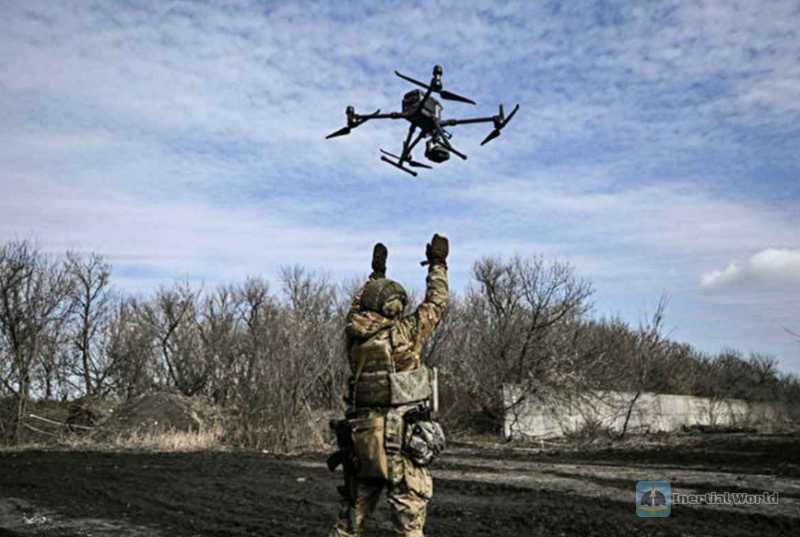
The drone flew back to the shelter from the front line in just a few minutes. The reporter saw ’Rem’ jump onto the roof, receive the drone and hand it to ’Duke’, and they all stayed in the enemy’s sight as little as possible. After installing a new battery pack, the drone took off from the same roof and prepared to fly for another 20-25 minutes. After the drone returned to the battlefield, unidentified soldiers were seen throwing grenades into a trench. ’Rem’ said: ’It seems that the people in the trench are our people, which means that the people in the forest are our enemies. Can I get the mortars or something to fire?’ Convinced that the four soldiers weren’t the ones the infantry commander was looking for, he contacted a nearby 120mm mortar team. Just as they were about to fire, an explosion occurred near the entrance to the trench.’ Was it you?’ Drone operator ‘Rem’ asked the mortarman, ‘If not, it looks like the enemy mortars are already working.’ As with the howitzers, the mortar team opened fire, waiting for ‘Rem’ to correct the impact point, but no explosion was seen nearby.’ They are working hard to aim at this target. What often happens is that we find the targets, but we don’t have the weapons to hit them.
At this moment, the reporter’s interview with the drone team was interrupted by a commando team returning to the shelter. Soldiers were bustling and the dark corridors were full of adrenaline. Helmets and rifles were thrown aside and the men were looking for their own way to relieve stress.’ I’m not a hero here. Drone operator ’Contrabas’ said, quickly standing up to give up his seat, "You can’t compare my job with what these people do every day. The reporter who returned to the rear soon received a call from ’Rem’, who said that in the next few hours of searching, the missing Ukrainian soldiers were still not found. In the postscript of this report in the Kiev Independent, reporter Francis Farrell wrote, ’I wrote this report in the endless battle of Bakhmut, hiding in the underground shelter. The battle of Bakhmut was hell on earth, and it was difficult to understand what was happening on the ground, so I used drones to I watched the battle from the perspective of the drone operator. Although the Ukrainian army has achieved amazing victories in the early stage, the fact that the Russian army can continue to launch fierce attacks has shown that the war is far from over. "
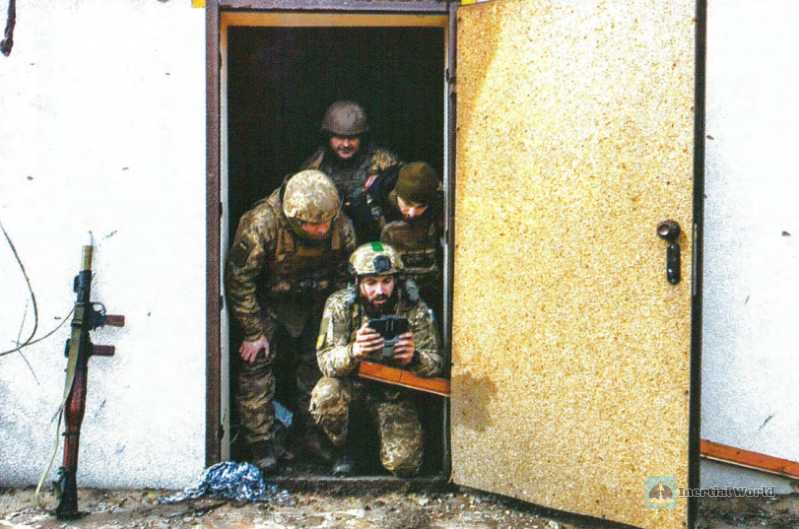
Soon after this report, Bakhmut was captured by the Russian "Wagner" troops, and all Ukrainian troops evacuated the ruined town. The reporter did not know whether these drone operators were alive or dead. But from this report, we can experience the real combat scene of civilian drones in the war.
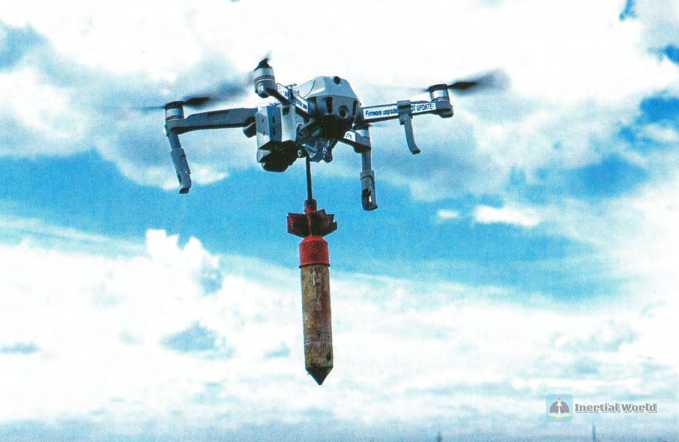
From this report, we can see that the most important role of civilian/commercial drones is reconnaissance and surveillance, providing our own troops with a battlefield environment that is as transparent and real-time as possible. Before the active use of civilian/commercial drones, the acquisition of such tactical intelligence relied on a small number of hand-thrown drones, forward scouts, medium-sized tactical drones, and optical/radar detection equipment. All of these detection methods have more or less various limitations, and the application of civilian/commercial ultralight drones has solved this problem.
Online drones on the Russian-Ukrainian battlefield
In the Russian-Ukrainian battlefield, cheap civilian drones are widely used by both sides, mainly divided into three categories:
Multi-rotor drones: There are a large number of consumer-grade quad-rotor and six-rotor drones available on major international shopping websites. These multi-rotor drones do not require cumbersome operating tables, and even a primary school student can quickly use the handheld remote control. Moreover, they can bypass most weapons bans and be sent to winter places around the world through civilian express logistics channels. Once entering the battlefield, these drones will be widely used to perform battlefield front-line reconnaissance, damage assessment and other tasks, helping commanders to quickly judge the battlefield situation and determine the attack or defense plan. At the same time, a large number of photos and videos taken by multi-rotor drones are spread to the Internet every day, becoming an important material for the propaganda war between Russia and Ukraine.
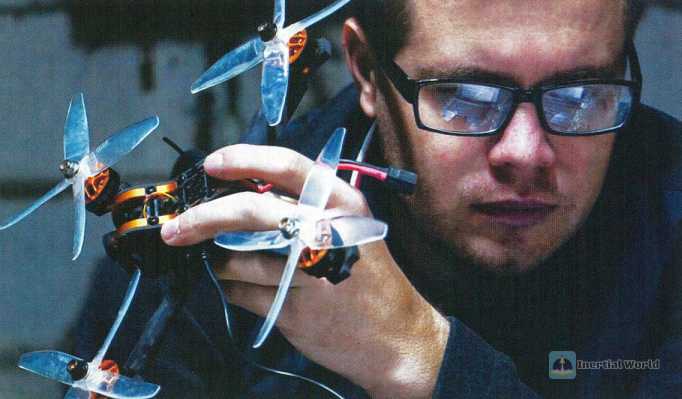
As reported by the Kyiv Independent, the drone operator "Rem" used a certain type of commercial quad-rotor drone, which is a drone used for security, emergency firefighting, power/oil and gas inspections, water conservancy applications, etc. The total weight of the aircraft is 3.77 kg, and it can be deployed from transport mode to flight mode in one minute. The Ukrainian army is most interested in the multi-sensor hybrid gimbal system under the nose, which is equipped with a laser rangefinder that can accurately measure the distance of 3~1200 meters targets; a 48-megapixel camera with 16x zoom; a 24mm caliber 12-megapixel wide-angle camera: a 30Hz 640x512 resolution thermal imaging camera with all-weather shooting capabilities. The aircraft can operate at a temperature of -20~50℃, with a maximum flight altitude of 7,000 meters, and has a wind resistance of 15 meters/second (level 7 wind). The transmission system can achieve dual-antenna 2.4G+5.8G dual-carrier transmission, and adopts a dual-battery system with a maximum operating time of 6 hours. This type of drone is considered an ultra-light drone in the entire drone system, but in the evaluation standards for civilian multi-rotor drones, a certain type of commercial drone is already considered a relatively complex medium-sized drone, and it has a certain load capacity and strong video reconnaissance capabilities. It is also completely suitable to use this kind of drone for patrolling pipelines to scout the battlefield situation. The thermal imaging camera it carries can clearly observe the movements of enemy armored targets through the smoke of the battlefield, which can be said to be the "eye of the sky" for battlefield infantry. Moreover, the price of this type of drone converted into RMB is only tens of thousands of RMB. Even if the international price is more expensive, it is very cheap for a national army as a consumable equipment. For countries like Russia and Ukraine, where the drone industry is not well developed, it is reported that it costs at least 3,000 to 6,000 US dollars to assemble and produce commercial drones of this level and technical level, which is much more expensive than direct purchase. Considering the extremely alarming consumption of drones on the Russian-Ukrainian battlefield, cost-effectiveness is an important issue that the Russian and Ukrainian armies need to consider when using drones.
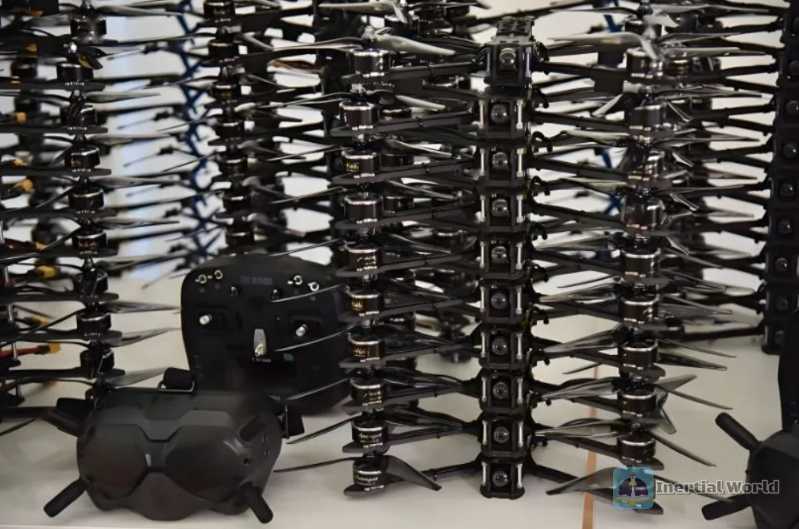
Therefore, both Russia and Ukraine have purchased a large number of such drones through commercial channels. In addition to battlefield reconnaissance, they have also been converted into light reconnaissance and strike drones. Among them, slightly larger drones can be equipped with rocket launchers. For example, Ukraine is equipped with a four-rotor drone equipped with an RPG-22/26 anti-tank rocket launcher to perform air strike missions. Smaller ones are used to throw grenades, which can also kill enemy manpower. Some lucky grenades even got into tank armored vehicles with open hatches and destroyed them. As the war continues to heat up, fairing shell kits specifically used for drones to throw grenades have appeared on the battlefield, greatly improving the accuracy and destructive power of bombing. "Contrabas" in the report of the "Kiev Independent" is the operator of this attack drone.
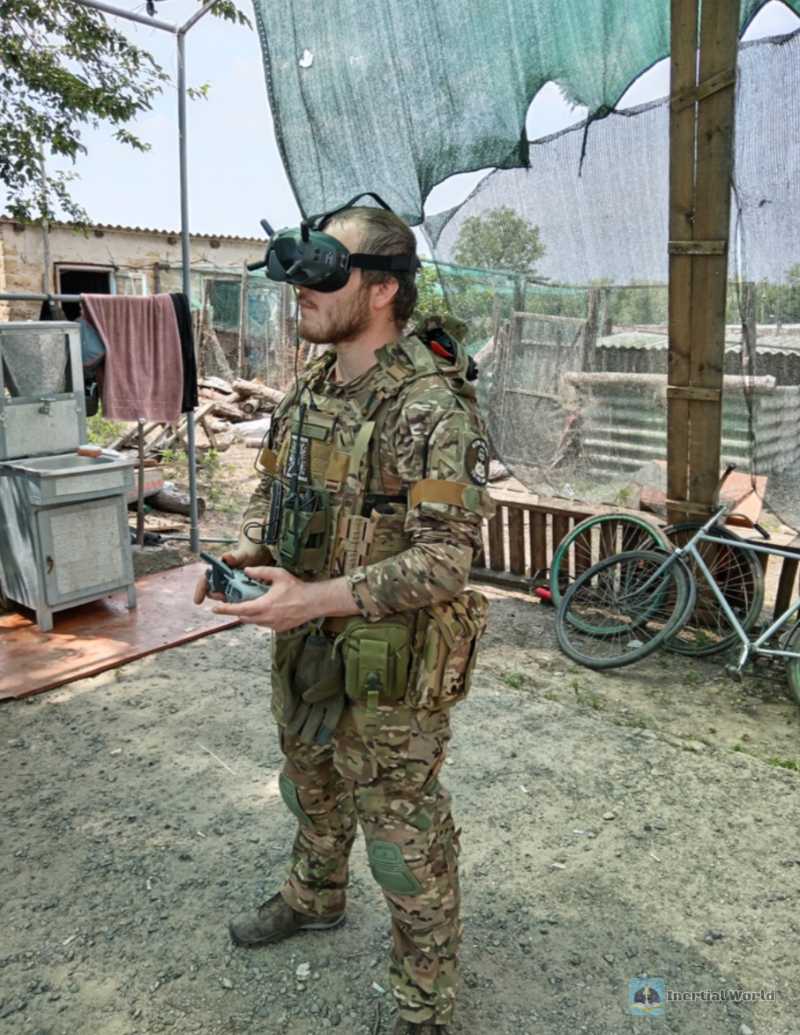
FPV cross-country drones. Compared with ultra-light civilian/commercial multi-rotor drones, Russia and Ukraine have widely used a type of multi-rotor small racing drone called FPV cross-country drone since the second half of 2022. FPV is the abbreviation of "First Person View" in English, which is a new way of playing based on the installation of wireless camera return equipment on remote control aviation models or vehicle models, and the control of models on the ground by looking at the screen. With the increasing maturity of drone technology, it has entered our field of vision in a cooler and more fun way-FPV drone racing. The operator of the FPV racing rotor drone no longer stares at the screen to operate the drone, but wears FPV glasses similar to VR glasses, directly connects to the drone’s forward-looking probe, and drives the drone to shuttle quickly from a first-person perspective. The fastest FPV drone reaches a speed of 263 kilometers per hour. In order to pursue speed, this type of ultra-small drone often tries to simplify the weight of the fuselage as much as possible. It only has a fuselage frame, a battery pack and a forward-looking probe. Many of them are made by patching together assembly equipment. The size is very small and can be held up by one hand. Such a small rotor drone maintains such a fast speed and is almost invincible on the battlefield. Basically, no weapon can shoot down such a small high-speed target. If ordinary drones and cruise missiles are called "low, slow and small" targets, then FPV drones are "low, fast and small" targets. Because this type of drone can fly at a low altitude and high speed, it is also called a "crossing drone." In the Ukrainian army’s counterattack in June this year, the "Leopard" 2 main battle tank, which was put into the battlefield for the first time, was hit by a large number of FPV crossing drones of the Russian army. Russian soldiers on the front line added RPG-7 rocket warheads, improvised explosives and even MON-50 directional anti-personnel mines to the FPV drones, turning them into homemade cruise missiles. The most lethal of these are the RPG-7 warheads and MON-50 directional anti-personnel mines. The former is a shaped charge armor-piercing warhead with strong anti-armor capabilities. The FPV drones carry RPGs and specifically hit the weak top armor and side rear armor of the tanks, making them lose their combat effectiveness. The latter is the Russian version of the US military’s "Broadsword" directional anti-personnel mine, which is the famous "this side facing the enemy" mine. FPV drones equipped with this mine often fly over the Ukrainian trenches and directly "scatter flowers from the sky", firing hundreds of steel balls, which is much more powerful than throwing grenades.
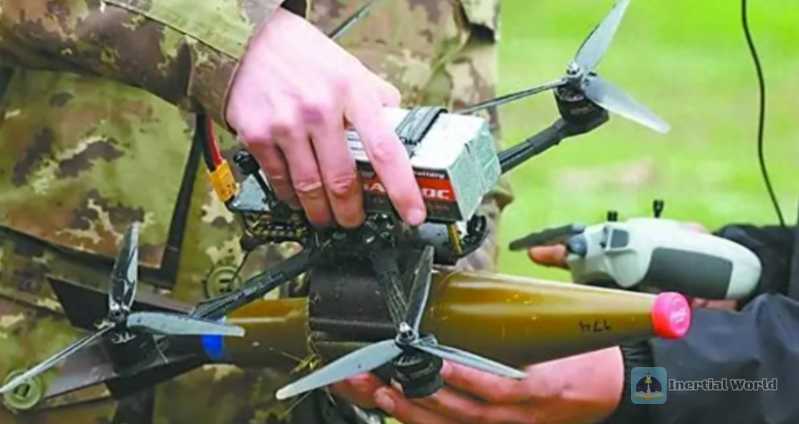
Reports show that the Ukrainian army has also modified some civilian/commercial drone models imported from foreign countries to make them similar FPV suicide drones. In addition, the latest news shows that the US Air Force’s "Angry Birds" special operations system team is also supporting Ukraine’s counterattack by developing new FPV technology. This team of engineers, pilots and programmers has developed several multi-purpose and "kamikaze" FPV suicide drone solution prototypes, which can be quickly mass-produced in Ukraine with cheap and easy-to-find components. American experts believe that compared with other modern precision weapons worth millions of dollars, FPV suicide drones are quite cheap, but can hit targets with much higher accuracy than old artillery. An FPV suicide drone costing a few thousand dollars can destroy military equipment worth millions of dollars. Currently, a Ukrainian website is implementing a fundraising project called the "Hero Plan", which plans to raise $400,000 through the Internet to cover all component and labor costs for the production of 50 FPV drones. There are many similar websites in the West, which makes this easy-to-manufacture drone more widely used on the battlefield.
3. Fixed-wing drones: In addition to rotary-wing drones, infantry squads and artillery companies often use small fixed-wing drones to perform reconnaissance, calibration and other tasks during the Russian-Ukrainian war. The most typical one is the Russian "Sea Eagle"-10 drone, which weighs about 10 kilograms, has a maximum activity radius of 120 kilometers, and a flight time of more than 10 hours. It is generally used as an artillery calibration drone. Ukraine has also invested in some domestically produced small fixed-wing reconnaissance drones, such as ACS3, ACS-3M and "Observer" M drones, which generally weigh about 20 kilograms, take off quickly through catapults, can carry 5 kilograms of payload and stay in the air for 24 hours, transmit data within a range of 200 kilometers, and have low noise levels in the engine. Equipped with a thermal imager, it can conduct day and night aerial reconnaissance.
In addition, Russia and Ukraine also took a fancy to some civilian fixed-wing small drones listed for sale on commercial websites. On June 22, 2022, a Ukrainian military-operated civilian fixed-wing drone attacked the Novosakhtinsk oil refinery near Rostov, Russia. The drone was equipped with a 15.20 kg bomb and could fly for about 7 hours without refueling. In January this year, local officials in the Russian-controlled eastern Ukrainian city of Luhansk posted on social media that they had shot down another civilian fixed-wing drone operated by the Ukrainian army. At 3 a.m. on April 29, about 10 Ukrainian military-operated civilian fixed-wing drones were divided into three groups and took off from Jiaodesa, targeting Crimea. When approaching the Sevastopol military port, four were shot down by the Russian anti-drone electronic jamming system, and the remaining six continued to fly. When entering the Gosaka Bay, another one was shot down by the Russian "Armor" S1 air defense system. The remaining five drones launched a suicide attack on the oil storage terminal. At least two drones carrying high explosives hit the oil tanks, followed by a large explosion. Sevastopol Mayor Razvozaev posted on social media early on the 29th that a total of four fuel storage facilities were destroyed. Since then, a certain type of civilian fixed-wing drone filled with explosives has become the main force of the Ukrainian army’s harassment of Crimea. At the same time, the Russian army also began to purchase such drones online. On March 11, the Ukrainian army shot down a certain type of civilian fixed-wing drone operated by the Russian army in eastern Ukraine. The Russian army modified it and installed a bomb-dropping device loaded with about 20 kilograms of bombs.
A certain type of civilian fixed-wing drone is a civilian drone used in aerial photography, land surveying and maritime search, border patrol, forest fire prevention, road inspection and river inspection. According to the information, the appearance of the aircraft is more like a reconnaissance and strike drone, with a front three-point landing gear, normal taxiing and landing, a wingspan of 5 meters, a fuselage length of 3.5 meters, a maximum take-off weight of 85 kilograms, a cruising speed of 120 kilometers per hour, an empty flight time of 8 hours, a maximum range of 800 kilometers, a flight ceiling of 4,000 meters, and a fuselage made of carbon fiber. It has the ability to fly in a level 7 wind, uses a DLE1700CC engine, and a set of 32-inch beech propellers are installed at the tail. The head cabin of the aircraft has a volume of 1000x340x350 mm, which can easily install various loads. The Russian army converted the aircraft into a reconnaissance and strike drone, installed a bombing device, and carried bombs for air strikes, while the Ukrainian army directly loaded explosives into the cabin of the drone, making it a suicide drone, and with its large range, it became a part-time "missile", playing a role similar to the Iranian-made "Witness" 131/136 cruise missiles used by the Russian army.
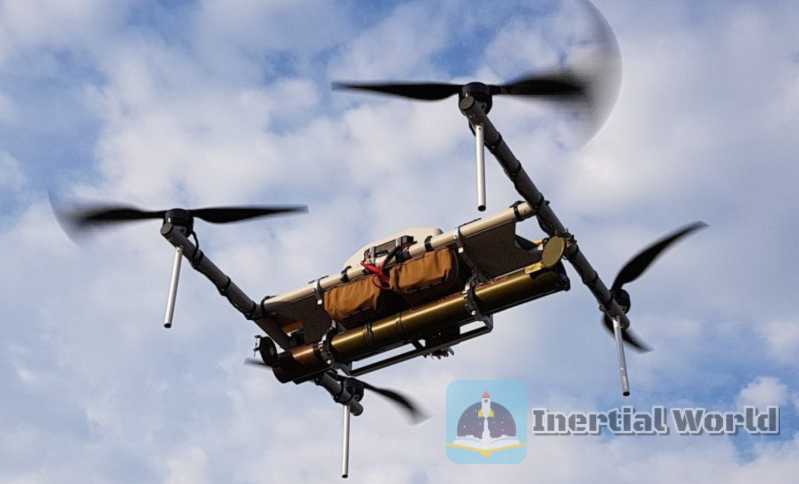

How to defend and intercept?
Where there is a spear, there must be a shield! At present, civilian drones are widely used on the battlefield and have achieved considerable results. How to defend and intercept such drones has become an issue that all countries’ armies must pay great attention to.
The first is to strengthen detection. The human eye can effectively detect low-flying civilian drones, but the human eye is not reliable. If you rely solely on traditional air observation posts for battlefield alert, civilian drones, especially fast FPV drones, will have an opportunity to take advantage.
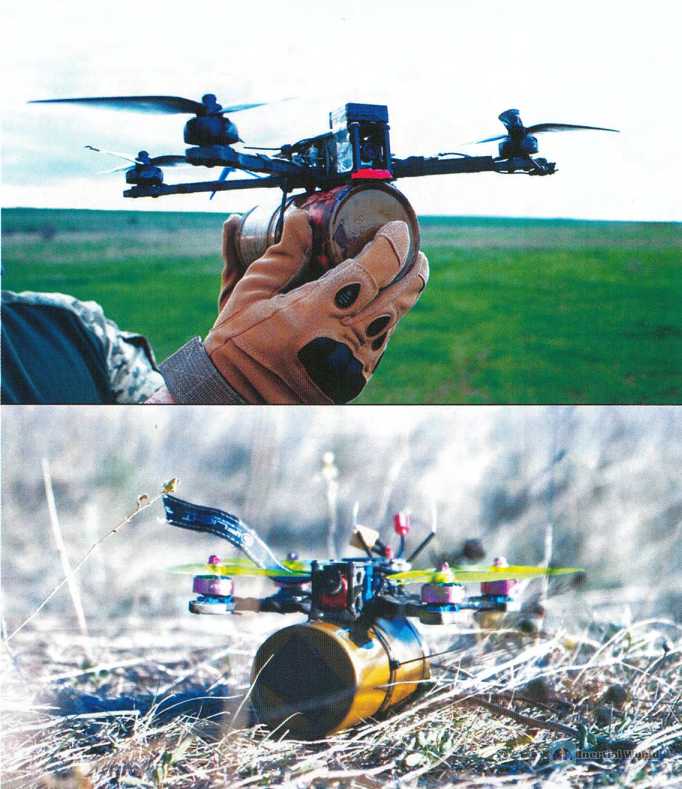
Therefore, it is necessary to strengthen the research and development of precision radars and multi-spectral optoelectronic detection devices to improve target search and discovery capabilities. For example, the latest M-SHORAD field air defense system currently in service has an integrated optoelectronic sensor system installed on the turret for target capture and situational awareness. There are also four RPS-42 small multi-task solid-state active phased array radars arranged around the upper part of the vehicle body. Due to its high sensitivity and powerful back-end software processing technology, it can track up to hundreds of low-altitude small targets at the same time. Since there is no complex and heavy rotating structure, it is suitable for installation on wheeled armored vehicles with low carrying capacity. It is used to promptly detect small drones and cruise missiles and other targets, and guide "Stinger" surface-to-air missiles and machine guns, machine guns, etc. to intercept. At present, my country has developed a similar TDA anti-UAV active phased array radar system, equipped with 3 active phased array antennas, each array covers a range of 120°, can detect small UAVs, cruise missiles and other targets, and has been selected by the Saudi Arabian military.

The US military M-SHORAD field air defense system, the turret is equipped with a comprehensive optoelectronic sensor system for target capture and situational awareness, and there are 4 RPS-42 small units arranged around the upper part of the vehicle
The second is high-energy damage. Although an excellent shooter can hit a small UAV flying in the air with a gun in his hand, which is also the lowest cost interception solution, after all, this type of UAV target is small and fast, and the window time left for soldiers to shoot is very short. The shooting accuracy of different guns is also different, so guns are not reliable interception weapons. If we switch to small and medium caliber anti-aircraft machine guns, we will have the frustration of "using a big gun to kill a mosquito". The Russian army once tried to use the 30mm machine gun of the "Tunguska" combined air defense system to attack the "DJI" drone that was close at hand, but it was difficult to accurately destroy it.
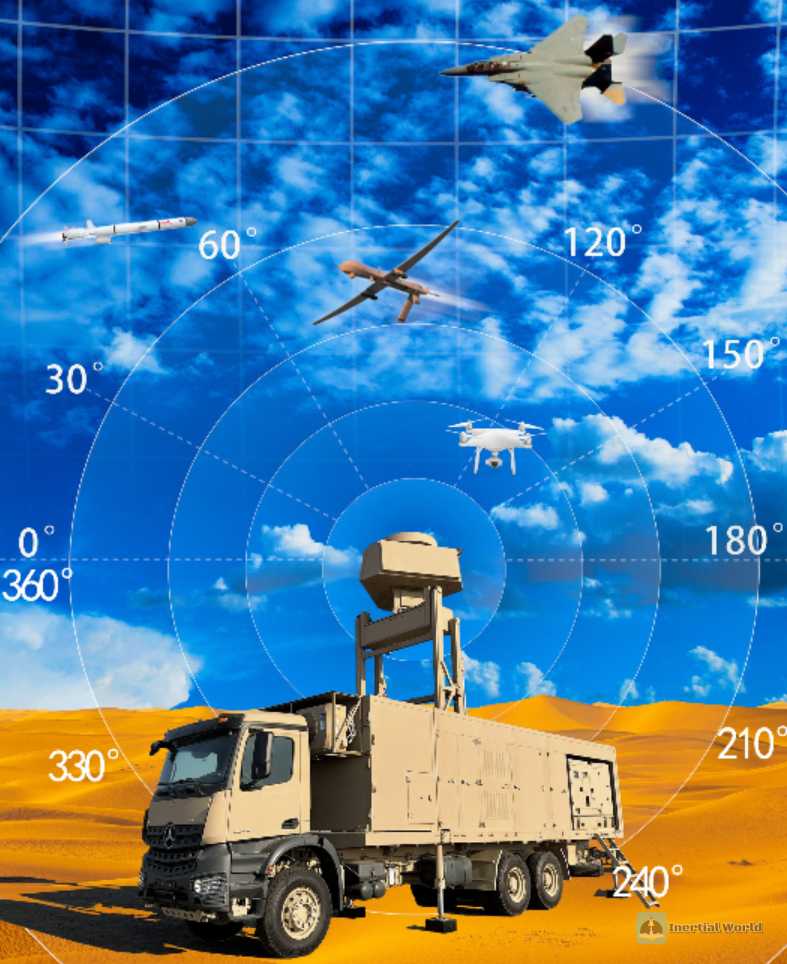
For countries with sufficient technology and strong funds, laser beams and high-energy microwave weapons seem to be more effective in dealing with small drones, and have also shown advantages such as fast, flexible, accurate, and cost-effective. With the maturity of laser weapons and high-energy microwave weapons technology, they will become new concept weapons to fight against small drones or cruise missiles. For example, Germany’s Rheinmetall has launched a 50-kilowatt high-energy laser air defense system equipped with 3 laser beam emitters. The power is increased through beam folding technology, which can effectively deal with air targets including small drones and cruise missiles. In addition, compared with high-energy laser weapons, microwave weapons have a longer range, are less affected by weather, and have more convenient fire control. They are suitable for dealing with drone swarm attacks. The solid-state microwave weapon system being developed by the US military has shot down dozens of drones during testing, and can also be applied to quickly intercept cruise missiles. my country’s research efforts are mainly concentrated in laser weapons. It has launched the LW30 laser defense system, which uses high-energy lasers emitted in a directional manner. It can not only perform air defense tasks, but also quickly intercept multiple types of targets such as drones, cruise missiles, air-to-ground missiles, and guided bombs. It can also undertake C-RAM combat tasks (i.e., "anti-rocket, artillery and mortar" tasks) to ensure that ground combat forces effectively defend against the threat of indirect firepower. It can also be used to deal with various optoelectronic equipment of ground targets. In the future, this type of weapon will become an effective solution to the "air suicide bomber" such as FPV flying drones. The third is saturation resistance. Develop low-cost, small and fast surface-to-air missiles, and use dense loading of launchers to deal with large-scale attacks by small drones or cruise missiles, and minimize defense costs. For example, Russia is developing the "Nail" compact surface-to-air missile for the "Armor" SM integrated air defense system. The diameter of the missile is less than 80 mm, and it features "one tube and four missiles". A standard 9M335 surface-to-air missile launch tube can accommodate four "Nail" missiles. The main targets of engagement are small drones and cruise missiles. A "Armor" SM can carry 48 "Nail" missiles, which can cope with the saturation attack of cruise missile groups. In the exhibition hall of the 2022 Zhuhai Air Show, the domestically produced new FK3000 air defense weapon system debuted for the first time. This new integrated air defense weapon system integrates the design of missiles and guns, the coordinated design of manned/unmanned vehicles, and the technology of launching multiple missiles on the same frame. It can not only strike air targets such as traditional fighters, but also strike small drones and cruise missiles that are currently in the limelight. In particular, the 48-unit missile launch box meets the needs of anti-saturation attack. The new surface-to-air missile equipped with it has a diameter of only 40 mm and is very low in cost. It is mainly used for terminal interception of cruise missiles and drone ammunition entering the attack state, and there are unmanned wingmen vehicles with 24-unit launchers for coordinated launch, which further enhances the effectiveness of resisting saturation attacks.
Fourth, multi-dimensional interference. By interfering with the GPS navigation system, data transmission chain, and video return line of the FPV cross-country drone of the small drone, it becomes a headless fly. This is not a difficult task for the armies of various countries, because they are only facing civilian drones. There are also various anti-unmanned devices that can be purchased on commercial websites. These security equipment should also be standard equipment for front-line troops.

In addition, military-grade electronic jamming stations can play a better role. For example, the T-type mobile electronic jamming station developed by Belarus can not only detect drones and cruise missiles through phased array radars and optoelectronic detection equipment, but also monitor the radio signals of directional communication between it and the control station, or simulate video transmission signals, thereby determining the flight route, sending data to anti-drone units, and blocking and jamming the satellite navigation receiver on the cruise missile. Its communication jamming range is 30 kilometers, and the satellite navigation jamming/deception range is 40 kilometers. In this regard, my country also has a large number of military and civilian enterprises that have developed drone jamming stations and have been put into use.
The fifth is single-unit defense. After the FPV drone is converted into a cruise missile, the target is often a single tank armored vehicle. Although the FPV drone is fast, compared with the speed of tank shells and anti-tank missiles, the speed of the FPV drone is not worth mentioning. Therefore, the active defense system on the existing tanks and armored vehicles can be optimized, such as installing a small active phased array radar. As long as the incoming FPV drone can be detected in time, the existing interceptor missile can destroy it at close range and strengthen the terminal defense. In 2017, my country announced the GL-5 active defense system and demonstrated its ability to intercept anti-tank missiles. At the 2022 Zhuhai Air Show, we saw a new active defense system on the VT-4A main battle tank, which includes 4 small active phased array radars and 4 groups of 8 interceptor missile launchers. Unlike the fixed launch GL-5, the new launcher can achieve up and down pitch, and can intercept small drones and cruise missiles attacking from the side and above. There is no doubt that this new active defense system can be installed on our army’s active tanks and armored vehicles to counter FPV drones.
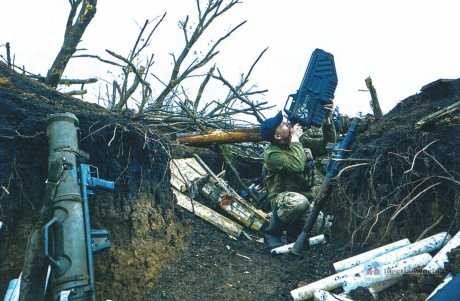

In addition, since the warhead fuses of such drones are generally based on trigger fuses, strengthening passive defense can also effectively deal with it. At present, the more common practice is to install a "sunshade" type grille shielding device on the top of the tank armored vehicle, and lay explosive reactive armor or even nylon nets, barbed wire, fishing nets, etc. to block the invasion of small drones and cruise missiles on the top armor. This method has been effectively verified on the battlefield. The Ukrainian army’s fishing net defense measures have caught a variety of regular cruise missiles including the "Lancet"-3 cruise missile, which is no problem for defending against FPV crossing aircraft.
Conclusion
Civilian drones were originally products that served social and economic development, but war will not allow them to be absent. Relying on low costs, easy access to channels and non-traditional strike methods, these drones have become the new darlings of the Russian-Ukrainian war. If we review this war that has once again changed the landscape of the land battlefield, the application of civilian drones will definitely occupy a place and will also become a major trend that affects the direction of future wars. For our army, how to better use and defend against civilian drones is an important topic that must be seriously considered as a preparation for future wars.




